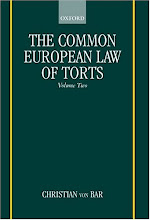ISO-conforming RFID tags for freight containers ready for the worst
2009-03-05
 A new ISO technical specification will help to ensure the functioning of radio frequency identification (RFID) tags on freight containers despite the harsh environments they may be subjected to during transport by sea, road and rail.
A new ISO technical specification will help to ensure the functioning of radio frequency identification (RFID) tags on freight containers despite the harsh environments they may be subjected to during transport by sea, road and rail.
ISO/TS 10891:2009, Freight containers – Radio frequency identification (RFID) – Licence plate tag, provides specifications and test methods for RFID devices used for automatic identification of freight containers in supply chains.
This tag is a permanently affixed, read-only tag containing limited data relating only to physical identification and description of the container to which it is affixed. This tag is required to last the lifetime of its associated container.
The purpose of ISO/TS 10891 is to optimise the efficiency of equipment control systems including the optional usage of electronic seals in conformity with the ISO 18185 series.
ISO/TS 10891:2009 establishes:
- A set of requirements for container tags which allow the transfer of information from a container to automatic processing systems by electronic means
- A data coding system for container identification and container related information which resides within a container tag
- A data coding system for the electronic transfer of both container identification and container related information from container tags to automatic data processing systems
- The description of data to be included in container tags for transmission to automatic data processing systems
- Performance criteria necessary to ensure consistent and reliable operation of container tags within the international transportation community
- The physical location of container tags on containers
- Features to inhibit malicious or unintentional alteration and/or deletion of the information content of container tags when installed on a freight container.
Mr Frank Nachbar, leader of the ISO committee which developed the standard comments: "Containerization has reduced the time and cost of moving goods across the oceans to market and it has greatly reduced pilferage and theft in the transportation of goods, as well as leading to enormous improvements in the safety and health of transportation workers. ISO/TS 10891 will help container manufacturers, the shipping industry, customs, terminal operators, rail operators and container depot operators to achieve optimal benefits from using RFID to improve efficiency, speed up operations and enhance security in the handling and transport of freight containers."
ISO/TS 10891:2009, Freight containers – Radio frequency identification (RFID) – Licence plate tag, was developed by ISO technical committee ISO/TC 104, Freight containers, subcommittee SC 4, Identification and communication. It is available from ISO national member institutes (see the complete list with contact details). It may also be obtained directly from the ISO Central Secretariat, price 86 Swiss francs, through theISO Store or by contacting the Marketing & Communication department (see right-hand column).

 The workshop was jointly organized by the International Energy Agency (IEA), the International Organization for Standardization (ISO) and the International Electrotechnical Commission (IEC).
The workshop was jointly organized by the International Energy Agency (IEA), the International Organization for Standardization (ISO) and the International Electrotechnical Commission (IEC).




.jpg)











